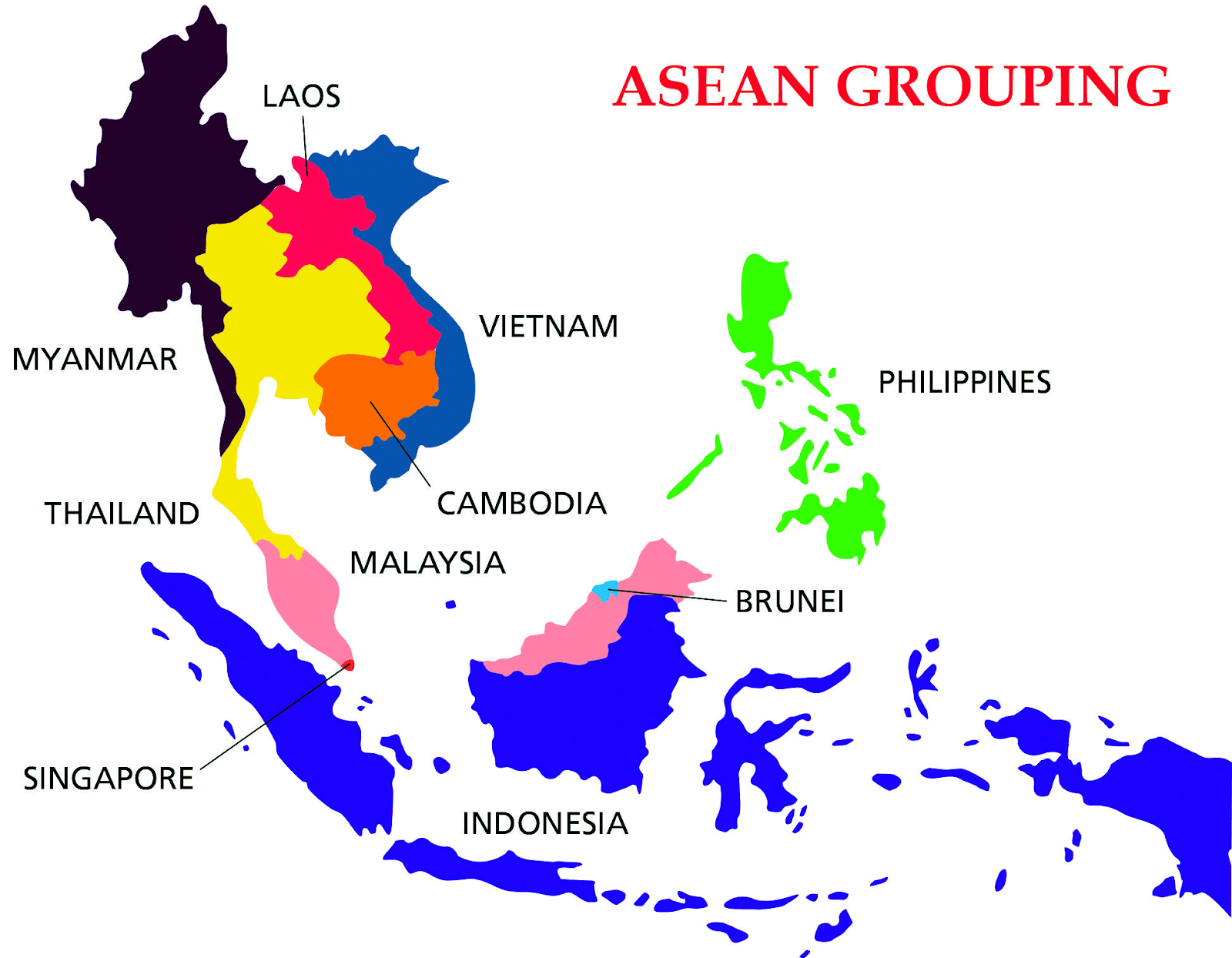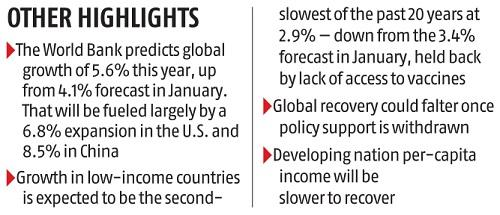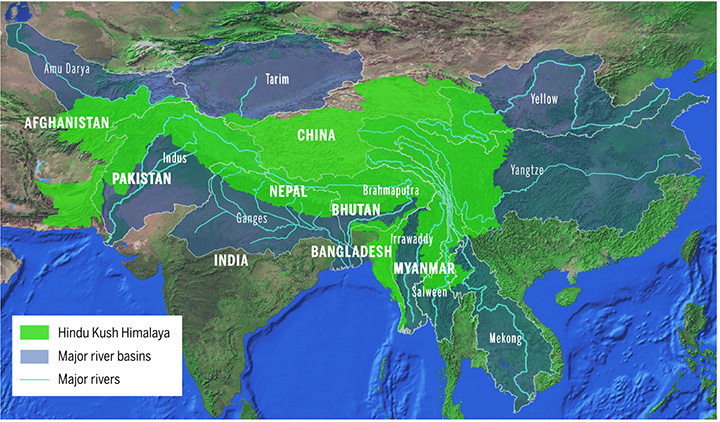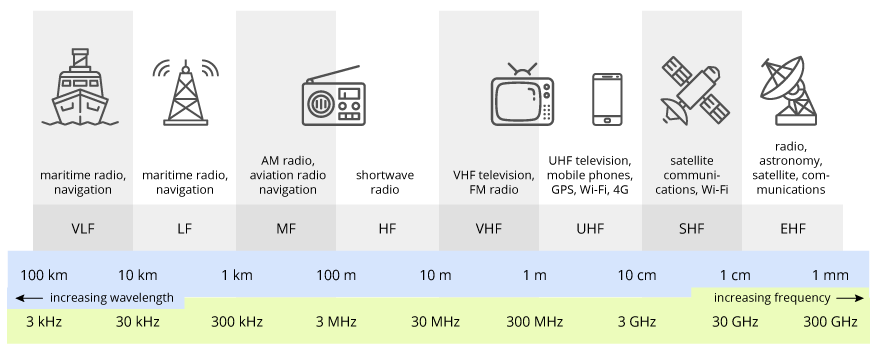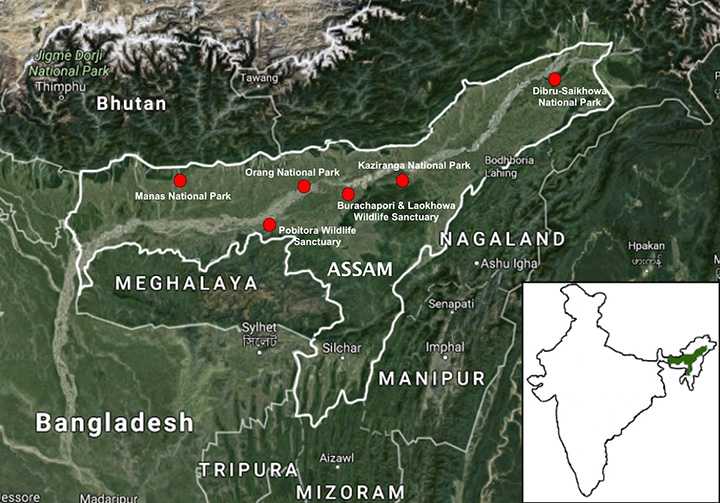International Relations
China-ASEAN Meeting
Why in News
Recently, China hosted a meeting of foreign ministers from the 10 Association of Southeast Asian Nations (ASEAN) countries.
- The meeting marks the 30th anniversary of China-ASEAN dialogue.
- With this meeting China looks to deepen its economic ties with the region as well as push back the renewed effort at regional engagement from the US, as well as from the QUAD (Quadrilateral Framework) grouping.
- QUAD earlier this year came out with a regional vaccine initiative.
Key Points.
- China’s Stand:
- China’s Cultural Diplomacy:
- Reiterated that China and ASEAN should jointly carry forward Asian values in a subtle dig at the West.
- China in 2014 had put forward the idea that it was for “Asian people to uphold Asia’s security”.
- Reiterated that China and ASEAN should jointly carry forward Asian values in a subtle dig at the West.
- Covid-Vaccines:
- China offered ASEAN countries its vaccines as well as closer cooperation on joint vaccine development and production.
- Maritime Security & Disputes:
- China called for considering the lifting of China-ASEAN ties to comprehensive strategic partnership and strive for an early agreement on a code of conduct in the South China Sea.
- China is banking on deep economic links to both offset maritime disputes and the push among some ASEAN countries for closer defence ties with the US amid their concerns about China’s growing military footprint in the South China Sea.
- Regional Comprehensive Economic Partnership:
- China pushed for the early implementation of the Regional Comprehensive Economic Partnership (RCEP), which was signed by China, ASEAN countries, Japan, South Korea, Australia and New Zealand in November 2020.
- India withdrew from the RCEP largely because of concerns it would open it up to Chinese goods amid an already wide trade imbalance with China, and the failure of the agreement to adequately open up to services.
- China pushed for the early implementation of the Regional Comprehensive Economic Partnership (RCEP), which was signed by China, ASEAN countries, Japan, South Korea, Australia and New Zealand in November 2020.
- China’s Cultural Diplomacy:
- ASEAN’s Importance for China:
- ASEAN plays a key role in Chinese economic and strategic interests.
- The region straddles vital sea lanes of communication that represent China’s access to the global market, including vital imports of Middle Eastern oil.
- Economically entwined with China, the relatively small nations of the region also offer ample opportunities for China to advance its influence and weaken what Chinese strategists perceive as a US (Presence of US) engineered chain of encirclement around the Chinese mainland.
- ASEAN and India:
- Traditionally the basis of India-ASEAN ties has been trade and people-to-people ties due to shared historical and cultural roots, a more recent and urgent area of convergence has been balancing China’s rise.
- In 2020, 17th ASEAN-India Virtual Summit was held.
- The 8th East Asia Summit Economic Ministers’ Meeting (EAS-EMM) was also held in 2020. It comprises the ten member states of the ASEAN, along with 8 other countries namely Australia, China, Japan, India, New Zealand, the Republic of Korea, Russia and the USA.
- Both India and ASEAN aim to establish a rules-based security architecture for peaceful development in the region, in contrast to China’s aggressive policies.
- Like India, several ASEAN members such as Vietnam, the Philippines, Malaysia, and Brunei have territorial disputes with China, the China factor does form an important component of the relationship.
- India in 2014 reinvigorated the Look East policy into Act East, with a more strategic outlook than its previous incarnation, focusing on engagement not just with Southeast Asian countries but also those in the Pacific.
- The main focus of the Act East policy is on enhancing connectivity between India and South East Asia.
- Traditionally the basis of India-ASEAN ties has been trade and people-to-people ties due to shared historical and cultural roots, a more recent and urgent area of convergence has been balancing China’s rise.
Association of Southeast Asian Nations
- About:
- It is a regional grouping that promotes economic, political, and security cooperation.
- It was established in August 1967 in Bangkok, Thailand with the signing of the ASEAN Declaration (Bangkok Declaration) by the founding fathers of ASEAN, namely Indonesia, Malaysia, Philippines, Singapore and Thailand.
- Its chairmanship rotates annually, based on the alphabetical order of the English names of Member States.
- ASEAN countries have a total population of 650 million people and a combined Gross Domestic Product (GDP) of USD 2.8 trillion. It is India’s 4th largest trading partner with about USD 86.9 billion in trade.
- Members:
- Brunei, Cambodia, Indonesia, Laos, Malaysia, Myanmar, the Philippines, Singapore, Thailand, and Vietnam..
Way Forward
- With China frequently displaying the intention as well as capability to challenge India, as seen in the Doklam standoff, it is pertinent that India finds more like-minded nations interested in working together to protect regional peace and stability.
- In this context, ASEAN fits the bill perfectly. ASEAN can also spur rapid growth of India’s underdeveloped northeastern region if linkages that enable movement of people and goods could be established quickly.
- But in order to do that, India must focus on speeding up connectivity projects and addressing its uneven balance of trade with ASEAN nations.
Economy
Global Economic Prospects: World Bank
Why in News
Recently, the World Bank has released its June 2021 Global Economic Prospects where it has forecast India’s GDP growth to be 8.3% for the year 2021-22.
Key Points
- GDP Estimate:
- For India:
- India's economy is expected to grow at 8.3% for Fiscal Year 2021-22, 7.5% for 2022-23 and 6.5% for 2023-24.
- For World:
- The world economy is expected to expand 5.6%, the fastest post-recession growth rate in eighty years.
- However, global output will still be 2% below pre-pandemic projections by year-end.
- For India:
- Cause:
- For FY 2020-21:
- The projected growth compares to the worst ever contraction of 7.3% in FY 2020-21 and 4% expansion in 2019-20.
- India’s recovery is being hampered by the largest outbreak of any country since the beginning of the pandemic.
- For FY 2021-22:
- The forecast for FY22 (8.3%) factors in expected economic damage from an enormous second Covid-19 wave and localised mobility restrictions since March 2021.
- For FY 2022-23:
- Growth is expected to slow to 7.5% as a result of the pandemic’s lingering effects on the financial position of households, companies and banks and possibly low levels of consumer confidence and heightened uncertainty around job and incomes.
- For FY 2020-21:
- Steps Taken by India:
- The Reserve Bank of India (RBI) announced measures to provide liquidity to Micro, Small and Medium firms (MSMEs), and loosened regulatory requirements on the provisioning for non-performing assets.
- Fiscal policy shifted in the FY 2021/22 budget toward higher expenditure targeted at healthcare and infrastructure to boost the post-pandemic recovery.
- Suggestions:
- Globally coordinated efforts are essential to accelerate vaccine distribution and debt relief, particularly for low-income countries.
- As the health crisis eases, policymakers will need to address the pandemic’s lasting effects and take steps to spur green, resilient, and inclusive growth while safeguarding macroeconomic stability.
- For low-income countries, policies focusing on scaling up social safety net programs, improving logistics and climate resilience of local food supply would be more helpful.
Key Terms
- Gross Domestic Product
- GDP is a measure of economic activity in a country. It is the total value of a country’s annual output of goods and services. It gives the economic output from the consumers’ side.
- GDP = Private consumption + Gross investment + Government investment + Government spending + (exports-imports).
- Recession and Depression
- Recession: It is a macroeconomic term that refers to a slowdown or a massive contraction in economic activities for a long enough period, or it can be said that when a recession sustains for long enough, it is called a recession.
- Depression: It is a deep and long-lasting period of negative economic growth, with output falling for at least 12 months and GDP falling by over 10% or it can be referred to as a severe and prolonged recession.
- Fiscal Policy
- Fiscal policy refers to the use of government spending and tax policies to influence economic conditions.
- During a recession, the government may employ expansionary fiscal policy by lowering tax rates to increase aggregate demand and fuel economic growth.
- In the face of mounting inflation and other expansionary symptoms, a government may pursue contractionary fiscal policy.
World Bank
- About:
- The Bretton Woods Conference held in 1944, created the International Bank for Reconstruction and Development (IBRD) along with the International Monetary Fund (IMF).
- The IBRD later became the World Bank.
- The World Bank Group is a unique global partnership of five institutions working for sustainable solutions that reduce poverty and build shared prosperity in developing countries.
- The Bretton Woods Conference held in 1944, created the International Bank for Reconstruction and Development (IBRD) along with the International Monetary Fund (IMF).
- Members:
- It has 189 member countries. India is also a member country.
- Major Reports:
- Ease of Doing Business.
- Human Capital Index.
- World Development Report.
- Migration and Development Brief.
- Global Economic Prospects.
- Its Five Development Institutions:
- International Bank for Reconstruction and Development (IBRD): Provides loans, credits, and grants.
- International Development Association (IDA): Provides low- or no-interest loans to low-income countries.
- International Finance Corporation (IFC): Provides investment, advice, and asset management to companies and governments.
- Multilateral Guarantee Agency (MIGA): Insures lenders and investors against political risk such as war.
- International Centre for the Settlement of Investment Disputes (ICSID): Settles investment-disputes between investors and countries.
- India is not a member of ICSID.
Governance
Fast Tracking Freight in India: NITI Aayog
Why in News
NITI Aayog, Rocky Mountain Institute (RMI) and RMI India’s new report, Fast Tracking Freight in India: A Roadmap for Clean and Cost-Effective Goods Transport, present key opportunities for India to reduce its logistics costs.
- RMI is an independent nonprofit organization founded in 1982.
NITI Aayog
- It is a public policy think tank of the Government of India, established with the aim to achieve sustainable development goals with cooperative federalism by fostering the involvement of State Governments of India in the economic policy-making process using a bottom-up approach.
- It was established to replace the Planning Commission. The Prime Minister is its ex-officio chairman.
Key Points
- Growing Freight Transport Demand:
- Due to the rising demand for goods and services, freight transport demand is expected to grow rapidly in the future.
- While freight transport is essential to economic development, it is plagued by high logistics costs and contributes to rising carbon dioxide emissions and air pollution in cities.
- India’s Potential: It has the potential to:
- Reduce its logistics cost by 4% of Gross Domestic Product (GDP).
- Achieve 10 gigatonnes of cumulative carbon dioxide emissions savings between 2020 and 2050.
- Reduce Nitrogen Oxide (NOx) and Particulate Matter (PM) emissions by 35% and 28%, respectively, until 2050.
- Accommodating More Urban Citizens:
- As India’s freight activity grows five-fold by 2050 and about 400 million citizens move to cities, a whole system transformation can help uplift the freight sector.
- This transformation will be defined by tapping into opportunities such as:
- Efficient rail-based transport.
- Optimisation of logistics and supply chains.
- Shift to electric and other clean-fuel vehicles.
- These solutions can help India save Rs. 311 lakh crore cumulatively over the next three decades.
- Need to Make Freight Transportation Cost Effective:
- Freight transportation is a critical backbone of India’s growing economy, and now more than ever, it’s important to make this transport system more cost-effective, efficient, and cleaner.
- Efficient freight transport will also play an essential role in realising the benefits of existing government initiatives such as Make in India, Atma Nirbhar Bharat, and Digital India.
- Recommendations:
- Increasing the rail network’s capacity, promoting intermodal transport, improving warehousing and trucking practices, policy measures and pilot projects for clean technology adoption, and stricter fuel economy standards.
- When successfully deployed at scale, the proposed solutions can help India establish itself as a leader in logistics innovation and efficiency in the Asia–Pacific region and beyond.
- Recent Initiatives:
- Dedicated Freight Corridor (DFC):
- It is a high speed and high capacity railway corridor that is exclusively meant for the transportation of freight, or in other words, goods and commodities.
- E-Way Bill Integration with FASTag, RFID:
- It will enable tax officers to undertake live vigilance in respect of E-Way Bill compliances by businesses, stop revenue leakage and will facilitate movement of large goods vehicles.
- FAME Scheme:
- The Indian government has created momentum through its Faster Adoption and Manufacturing of (Hybrid &) Electric Vehicles schemes that encourage, and in some segments mandates the adoption of electric vehicles (EV), with a goal of reaching 30% EV penetration by 2030.
- Bharat Stage VI norms:
- It includes a wide list of technology modifications, the most significant being making OBD (On-board diagnostics) mandatory for all vehicles.
- Corporate Average Fuel Efficiency (CAFE) Regulations:
- The CAFÉ standards were first notified in 2017 by the Union Ministry of Power (MoP) under Energy Conservation Act, 2001.
- The regulation is in accordance with the fuel consumption standards of 2015 that aim to increase fuel efficiency of vehicles on the road by 35% by 2030.
- Dedicated Freight Corridor (DFC):
Governance
Women in Military
Why in News
Two women officers have been selected to undergo helicopter pilot training for the first time in the Army Aviation Corps. They will join front-line flying duties on completion of their training in July 2022.
- Till now, women officers were assigned only ground duties in the Army Aviation Corps.
Army Aviation Corps
- Raised in November 1986, it operates the Dhruv advanced light helicopter, Chetaks, Cheetahs and Cheetal helicopters.
- It carries out an important role in supporting the army’s deployment in high altitude areas, including the Siachen Glacier.
Key Points
- Deployment in the Armed Forces:
- The Army, Air Force and Navy began inducting women as short-service commission (SSC) officers in 1992.
- This was the first time when women were allowed to join the military outside the medical stream.
- One of the turning points for women in the military came in 2015 when Indian Air Force (IAF) decided to induct them into the fighter stream.
- In 2020, the Supreme Court (SC) ordered the central government to grant permanent commission (PC) to women officers in the Army's non-combat support units on par with their male counterparts.
- The SC had rejected the government’s stand of women officers’ physiological limitations as being based on "sex stereotypes" and "gender discrimination against women”.
- Women officers have been granted PC in the Indian Army in all the ten branches where women are inducted for SSC.
- Women are now eligible to occupy all the command appointments, at par with male officers, which would open avenues for further promotions to higher ranks for them.
- In early 2021, the Indian Navy deployed four women officers on warships after a gap of almost 25 years.
- India’s only aircraft carrier INS Vikramaditya and fleet tanker INS Shakti are the warships that have been assigned their first women crews since the late 1990s.
- In May 2021, the Army inducted the first batch of women into the Corps of Military Police, the first time that women joined the military in the non-officer cadre.
- However, Women are still not allowed in combat arms like Infantry and Armored Corps.
- The Army, Air Force and Navy began inducting women as short-service commission (SSC) officers in 1992.
- Increment in Numbers:
- It has increased almost three-fold over the last six years, with more avenues being opened to them at a steady pace.
- There are 9,118 women currently serving the army, navy and air force.
- According to 2019 figures, women comprise only 3.8% of the world's second-largest army - compared to 13% of the air force and 6% of the navy.
- Significance:
- Gender is not a Hindrance: As long as an applicant is qualified for a position, one’s gender is arbitrary. In modern high technology battlefield technical expertise and decision-making skills are increasingly more valuable than simple brute strength.
- Military Readiness: Allowing a mixed gender force keeps the military strong. The armed forces are severely troubled by falling retention and recruitment rates. This can be addressed by allowing women in the combat role.
- Effectiveness: The blanket restriction for women limits the ability of commanders in theater to pick the most capable person for the job.
- Tradition: Training will be required to facilitate the integration of women into combat units. Cultures change over time and the masculine subculture can evolve too.
- Global Scenario: When women officially became eligible for combat positions in the American military in 2013, it was widely hailed as another step towards the equality of sexes. In 2018, the UK military lifted a ban on women serving in close combat ground roles, clearing the way for them to serve in elite special forces.
Way Forward
- Women were being kept out of command posts on the reasoning that the largely rank and file will have problems with women as commanding officers. Thus, changes have to take place in the culture, norms, and values of not only the rank and file of the Army but also that of society at large. The responsibility to usher these changes lies with the senior military and political leadership.
- The United States, Israel, North Korea, France, Germany, Netherlands, Australia and Canada are among the global militaries that employ women in front-line combat positions.
- It is the right of every woman to pursue a career of her choice and reach the top since Equality is a constitutional guarantee.
Biodiversity & Environment
Hindu Kush Himalayan Mountains
Why in News
According to UNDP (United Nations Development Programme), the Hindu Kush Himalayan (HKH) mountain ranges could lose up to two-third of its ice by 2100.
- About 2 billion people may face food, water shortages by 2100.
Key Points
- About HKH Region:
- It is often referred to as the ‘Third Pole’, on earth, is spread over 3,500 square kms across eight countries including India, Nepal and China.
- It contains the world’s third-largest storage of frozen water after Antarctica and the Arctic.
- Over 240 million people live in the region’s mountains. 1.7 billion live in the river basins downstream, while food grown in these basins reaches three billion people.
- The glaciers feed at least 10 major river systems, which have bearings on agricultural activities, drinking water and hydroelectricity production in the region.
- Challenges:
- According to ICIMOD’s (International Centre for Integrated Mountain Development) 2019 assessment, the HKH region will continue to warm through the 21st century even if the world is able to limit global warming at the agreed 1.5 degrees Celsius.
- The Paris agreement aims to substantially reduce global greenhouse gas emissions in an effort to limit the global temperature increase in this century to 2 degrees Celsius above pre industrial levels, while pursuing the means to limit the increase to 1.5 degrees.
- In the future, even if global warming is kept to 1.5 degrees C above the pre-industrialisation levels, warming in the HKH region is likely to be at least 0.3 degrees C higher, and in the northwest Himalaya and Karakoram at least 0.7 degrees C higher.
- According to ICIMOD’s (International Centre for Integrated Mountain Development) 2019 assessment, the HKH region will continue to warm through the 21st century even if the world is able to limit global warming at the agreed 1.5 degrees Celsius.
- Threat:
- High Mountain Asia (the Asian mountain ranges surrounding the Tibetan Plateau) will lose a substantial part of its cryosphere in the next decades and thus a substantial part of its water storage abilities. This will lead to increased water stress in high mountain areas.
- A cryosphere comprises portions of Earth’s surface where water is in solid form, including sea ice, lake ice, river ice, snow cover, glaciers, ice caps, ice sheets, etc.
- High Mountain Asia (the Asian mountain ranges surrounding the Tibetan Plateau) will lose a substantial part of its cryosphere in the next decades and thus a substantial part of its water storage abilities. This will lead to increased water stress in high mountain areas.
- Causes for the Melting of Glaciers:
- The melting is driven by larger anthropogenic modifications (i.e. influenced by humans) of the atmosphere.
- The HKH region lies downwind from some of the most heavily polluted places on Earth. This threatens agriculture, climate as well as monsoon patterns.
- Recommendations:
- It is recommended to shift away from fossil fuel use in energy, transport, and other sectors, while changing diets and agricultural practices to move to net-zero emissions of greenhouse gases.
- The countries in the region need to reduce emissions of black carbon and other air pollutants as well.
- Suggested Policies and Actions to Mitigate the Problem:
- Farmers will need support to design and invest in locally-appropriate water storage solutions, or to shift to agricultural practices that consume less water.
- Designs of new hydropower plants and grids will need to take into account the changing climate and water availability.
- Data and information, capacity-building and early warning systems and infrastructure design will need to be improved. This calls for sufficient funding and large-scale coordination.
- Related Initiative Taken by India:
- National Mission on Sustaining Himalayan Ecosystem (NMSHE) is one of the eight missions under the National Action Plan on Climate Change (NAPCC).
- The mandate is to evolve measures to sustain and safeguard the Himalayan glaciers, mountain ecosystems, biodiversity and wildlife conservation & protection.
The International Centre for Integrated Mountain Development
- ICIMOD is an intergovernmental knowledge and learning centre working for the people of the Hindu Kush Himalaya (HKH).
- It is based in Kathmandu, Nepal and works in and for eight regional member countries – Afghanistan, Bangladesh, Bhutan, China, India, Myanmar, Nepal, and Pakistan.
Governance
Railways Gets 5 MHz Spectrum
Why in News
Recently, the Union Cabinet approved the allotment of 5 MHz spectrum in the 700 MHz frequency band to the Indian Railways for improving its communication and signalling systems.
- Railways has also approved a indigenously developed Train Collision Avoidance System (TCAS).
Key Points
- About:
- The project, targeted to be completed in five years, is estimated to cost over Rs. 25,000 crore.
- The spectrum charges will be levied based on formula as prescribed by Department of Telecommunications for Royalty Charges and License Fee for captive use as recommended by the Telecom Regulatory Authority of India (TRAI).
- With this spectrum, the railways will introduce Long-Term Evolution (LTE)-based Mobile Train Radio Communication (MTRC) on its routes.
- The Railways currently relies on optical fibre for its communication network but with the allocation of fresh spectrum, it will be able to use high-speed radio on a real-time basis.
- LTE is a fourth-generation (4G) wireless standard that provides increased network capacity and speed for cellphones and other cellular devices compared with third-generation (3G) technology.
- Benefits:
- Seamless Connection:
- It will be used for modern signalling and train protection systems and ensure seamless communication between loco pilots and guards.
- The purpose of the LTE for Indian Railways is to provide secure and reliable voice, video and data communication services for operational, safety and security applications.
- Reduced Accidents & Delays:
- It will help prevent train accidents and reduce delays by enabling real-time interaction between the Loco Pilot, Station Master and the Control Centre.
- Internet of Things:
- This will also enable the railways to undertake Internet of Things (IoT) based remote asset monitoring, particularly of coaches, wagons and locos, and monitor live video feed of CCTV cameras in the coaches to ensure efficient, safer and faster train operations.
- IoT is a computing concept that describes the idea of everyday physical objects being connected to the internet and being able to identify themselves to other devices.
- This will also enable the railways to undertake Internet of Things (IoT) based remote asset monitoring, particularly of coaches, wagons and locos, and monitor live video feed of CCTV cameras in the coaches to ensure efficient, safer and faster train operations.
- Seamless Connection:
- Train Collision Avoidance System (TCAS).
- It is a microprocessor based control system, which continuously monitors the speed, direction of travel, distance travelled, aspect of the signal passed and alertness of the motorman and thus increases the safety of the railway system.
- It will help in improving the safety and increasing the line capacity to accommodate more trains using the existing infrastructure. The modern rail network will result in reduced transportation cost and higher efficiency.
Radio Spectrum
- The radio spectrum (also known as Radio Frequency or RF) is a part of the electromagnetic spectrum, electromagnetic waves in this frequency range are called radio frequency bands or simply ‘radio waves’.
- Radio waves have the longest wavelengths in the electromagnetic spectrum. These were discovered by Heinrich Hertz in the late 1880s.
- RF bands spread in the range between 30 kHz and 300 GHz (alternative point of view offers coverage 3 KHz – 300 GHz).
- To prevent interference between different users, the generation and transmission of radio frequency bands is strictly regulated by national laws, coordinated by an international body, the International Telecommunication Union (ITU).
Biodiversity & Environment
Dehing Patkai and Raimona National Parks: Assam
Why in News
Recently, the Assam government notified Dehing Patkai as the 7th National Park of the state.
- It was created shortly after Raimona reserve forest in western Assam’s Kokrajhar district was upgraded to a national park (6th) on the occasion of World Environment Day (5th June).
National Park
- An area, whether within a sanctuary or not, can be notified by the state government to be constituted as a National Park, by reason of its ecological, faunal, floral, or zoological association or importance, needed to for the purpose of protecting & propagating or developing wildlife therein or its environment.
- No human activity is permitted inside the national park except for the ones permitted by the Chief Wildlife Warden of the state under the conditions given in WPA (Wildlife Protection Act) 1972.
- Some human activities can be allowed inside a wildlife sanctuary, but no human activity is allowed in a national park.
Key Points
- About Dehing Patkai National Park:
- Location:
- It is located within the larger Dehing Patkai Elephant Reserve, which spreads across the coal- and oil-rich districts of Upper Assam (Dibrugarh and Tinsukia districts).
- The oldest refinery of Asia in Digboi and ‘open cast’ coal mining at Lido are located near the sanctuary.
- The Dehing Patkai Wildlife Sanctuary is also known as the Jeypore Rainforest.
- Naming:
- Dehing is the name of the river that flows through this forest and Patkai is the hill at the foot of which the sanctuary lies.
- Flora:
- It is believed to be the last remaining contiguous patch of lowland rainforest area in Assam.
- Fauna:
- Rare fauna found in the region include Chinese pangolin, flying fox, wild pig, sambar, barking deer, gaur, serow and Malayan giant squirrels.
- It is the only sanctuary in India which is home to seven different species of wild cats - tiger, leopard, clouded leopard, leopard cat, golden cat, jungle cat and marbled cat.
- Assamese macaque, a primate found in the forest, is in the red list of Near Threatened species.
- It has the highest concentration of the rare endangered White Winged Wood Duck.
- Location:
- Raimona National Park:
- Location:
- The Raimona National Park is within the Bodoland Territorial Region.
- The area of the park includes the northern part of the notified Ripu Reserve Forest, which forms the western-most buffer to the Manas National Park that straddles the India-Bhutan border.
- Borders and Boundary:
- It is bounded on the west by the Sonkosh river and the Saralbhanga river on the east.
- Both the rivers are tributaries of Brahmaputra.
- The Pekua river defines Raimona’s southern boundary.
- It is bounded on the west by the Sonkosh river and the Saralbhanga river on the east.
- Transboundary Conservation Landscape:
- It shares contiguous forest patches of Phipsoo Wildlife Sanctuary and Jigme Singye Wangchuck National Park of Bhutan creating a transboundary conservation landscape of more than 2,400 sq km.
- Flora and Fauna:
- It is famous for Golden Langur, an endemic species which has been named as the mascot of Bodoland region.
- It also has Asian elephant, Royal Bengal tiger, Clouded leopard, Indian gaur, Wild water buffalo, Spotted deer, Hornbill, more than 150 species of butterflies, 170 species of birds, 380 varieties of plants and orchids.
- Location:
- National Parks in Assam:
- Assam now has the third most National Parks after the 12 in Madhya Pradesh and nine in the Andaman and Nicobar Islands.
- The seven National Parks in the State are Dehing Patkai, Raimona, Kaziranga, Manas, Nameri, Orang, and Dibru-Saikhowa.
- Kaziranga and Manas are UNESCO World Heritage Sites. They are also tiger reserves along with Nameri and Orang.

